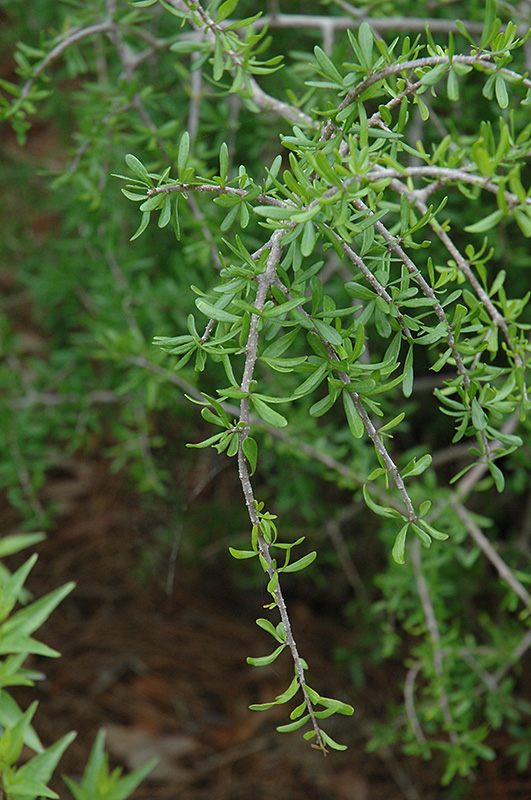Height: 6 feet
Spread: 8 feet
Sunlight:
![]()
Hardiness Zone: 6a
Other Names: Desert Olive, Foresteria angustifolia pendula
Description:
This large, airy shrub has an upward sprawling habit of growth with pendulous branches lined with tiny narrow leaves; great winter interest; best with regular waterings, but is also very drought tolerant, and can be used for xeriscaping
Ornamental Features
Weeping Texas Swamp Privet features unusual clusters of green flowers along the branches from late winter to early spring. It has green deciduous foliage. The small narrow leaves do not develop any appreciable fall color. It produces deep purple berries in mid summer. The smooth silver bark is extremely showy and adds significant winter interest.
Landscape Attributes
Weeping Texas Swamp Privet is an open multi-stemmed deciduous shrub with a rounded form and gracefully weeping branches. Its relatively fine texture sets it apart from other landscape plants with less refined foliage.
This is a relatively low maintenance shrub, and is best pruned in late winter once the threat of extreme cold has passed. It is a good choice for attracting birds to your yard. It has no significant negative characteristics.
Weeping Texas Swamp Privet is recommended for the following landscape applications;
- Mass Planting
- Hedges/Screening
- Naturalizing And Woodland Gardens
Planting & Growing
Weeping Texas Swamp Privet will grow to be about 6 feet tall at maturity, with a spread of 8 feet. It tends to be a little leggy, with a typical clearance of 2 feet from the ground, and is suitable for planting under power lines. It grows at a medium rate, and under ideal conditions can be expected to live for approximately 30 years.
This shrub should only be grown in full sunlight. It prefers dry to average moisture levels with very well-drained soil, and will often die in standing water. It is considered to be drought-tolerant, and thus makes an ideal choice for xeriscaping or the moisture-conserving landscape. It is not particular as to soil type or pH. It is highly tolerant of urban pollution and will even thrive in inner city environments. This is a selection of a native North American species. It can be propagated by cuttings; however, as a cultivated variety, be aware that it may be subject to certain restrictions or prohibitions on propagation.


